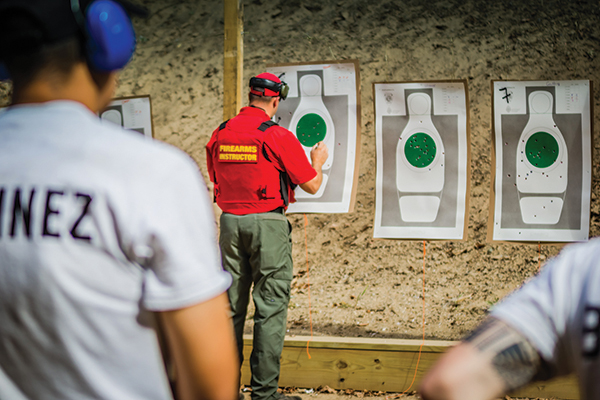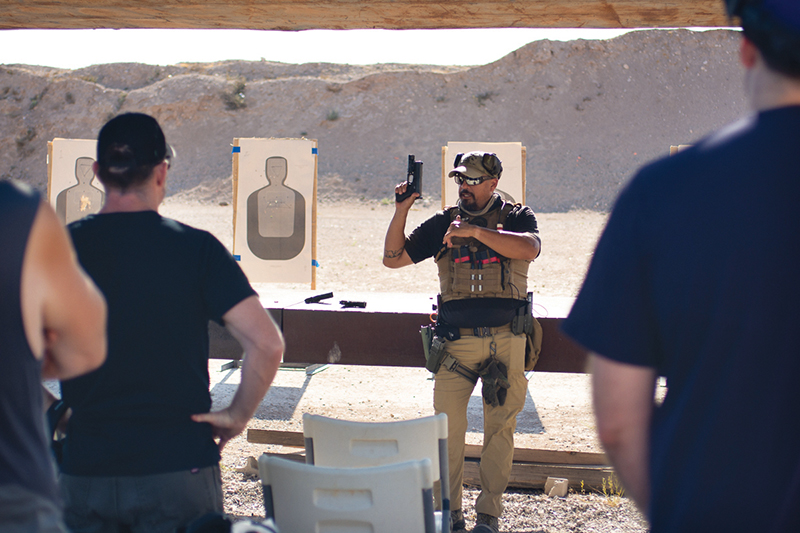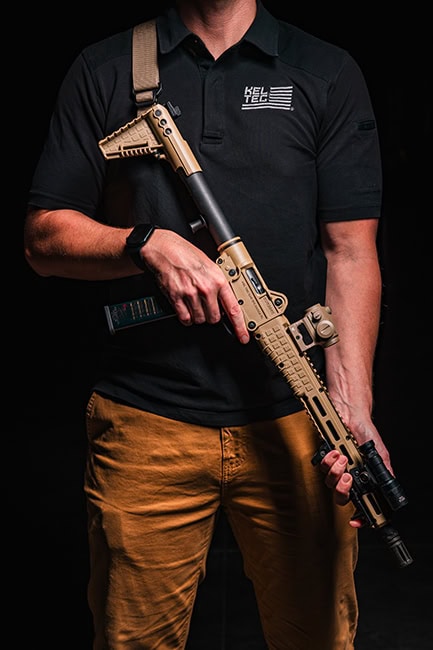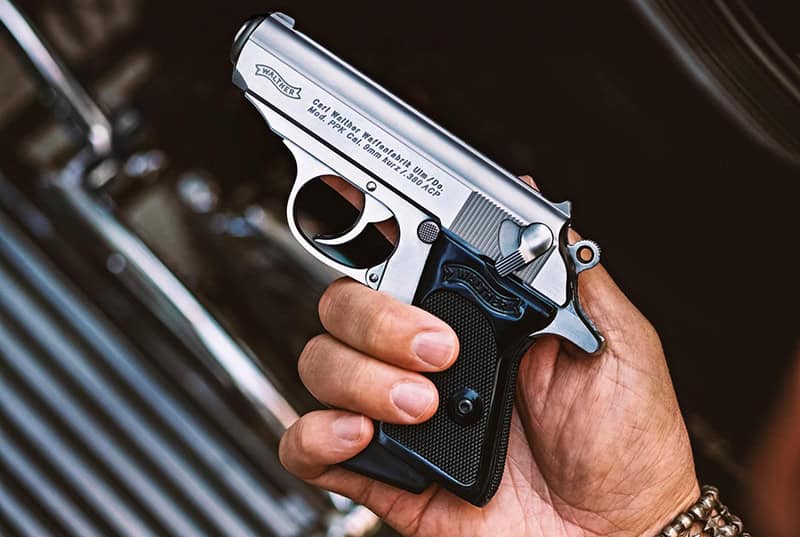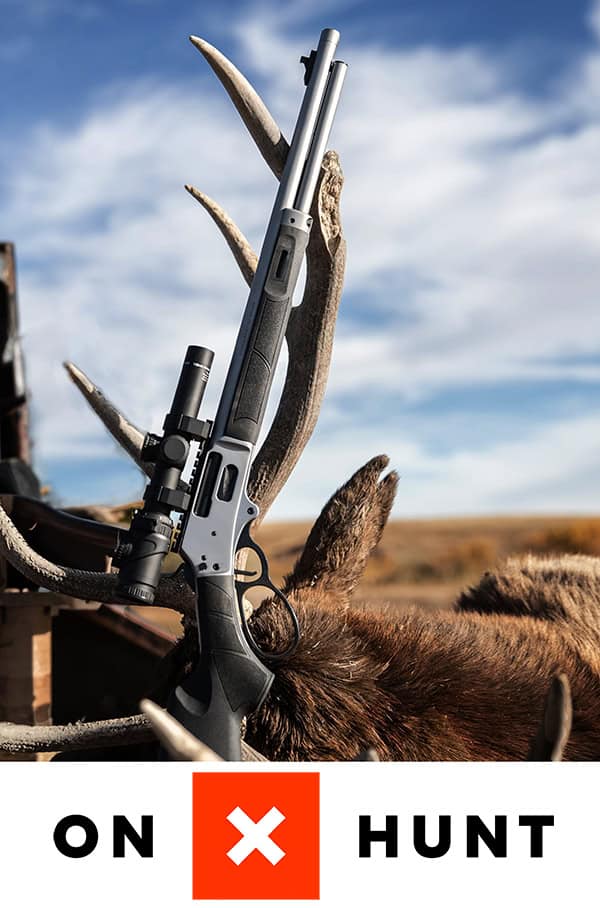Training Influences
Technology, Safety & Psychology Revitalizing Segment
The landscape of firearm training is constantly evolving because of technological advancements, changing societal dynamics and an ongoing attempt to increase safety and skill. As a firearms instructor and someone who covers related topics, I see the world around us influencing how training is being approached.
One size does not fit all! The trends involve tailoring training programs to individual needs, whether it’s a beginner seeking a good foundation or an advanced shooter aiming to expand their skill set. Focused training maximizes the value of practice by addressing specific challenges people face.
Interactive Simulations
Interactive or video-based simulations have emerged as a leading trend in firearm training. These systems test a person’s judgment, situational awareness and marksmanship.
Lake Highlands Shooting Center in Dallas has a MILO system I spent some time on recently with a long list of simulations ranging from home invasions to active shooter situations. Some companies like MILO will even create interactions tailored to your specific needs. Software and applications are available in all price ranges, making interactive simulations a market that’s easier to get into than it used to be.
Amanda Williams, cognitive division manager from MILO, said, “You can add a simulator to aid in a concealed carry class (CCL) or other safety training courses. Ranges can create fun events, such as a zombie night, where people get to shoot different zombie scenarios. There are many ways to get creative and use the system. For example, self-defense, CCL, marksmanship, active-threat response, etc.”
Scenario-based simulation training helps fill the gap between basic knowledge and real-world application.
Focus On Mental Preparedness
Beyond mastering mechanics, firearm training is now emphasizing mental readiness. The latest trend underscores the significance of mental conditioning, which prepares individuals to remain composed and decisive in high-stress situations. Most people coming in for training have never experienced a life-and-death situation. Sometimes, instructors forget this and talk over the student’s head.
Dave Weiner, CEO of Secure Measures, said, “Highlighting the ‘critical thinking’ aspect of scenario-based training should be in every gun owner’s toolbox. Most gun owners/CCW holder folks out there have never had to deploy their firearm under incredibly stressful situations, and you never know how you’ll react/respond until you are put in that situation. This type of training is a real eye-opener.”
“Highlighting the ‘critical thinking’ aspect of scenario- based training should be in every gun owner’s toolbox.”
Dave Weiner, CEO
Secure Measures
The Topics Have Expanded
It’s not all about firearms and shooting. Students now seek to develop skills like first aid, communication under stress and decision-making. It’s about cultivating a well-rounded readiness that extends beyond the shooting range.
Timothy Miller, president of LionHeart International Services Group, said, “I think church and school security training is the most trending. Remember, training now includes many different topics, including mental illness, de-escalation, domestic issues, etc. — all of which affect the churches and schools. In today’s world, you will be held accountable for the training you provided to volunteers, teachers, etc., should an incident occur. Remember not only can the training save lives, but it can also provide civil support should an organization be sued.”
Non-Lethal Training Tools
It’s not all about bullets and brass anymore. Integrating non-lethal training tools such as airsoft guns, laser-based systems and simulation rounds is on the rise.
These alternatives offer a safe and cost-effective means to hone shooting skills while maintaining a more realistic approach to training. A simulation round can increase someone’s stress level since getting hit by one can sting, which helps to make the experience more realistic.
“I always remind the people I train the how to shoot is important, but the when to shoot is the difference between freedom and a lifetime in prison.”
Timothy Miller, President
LionHeart International Services Group
Training Equipment
Equipment trends are revolutionizing the training landscape. You can simulate real firearms in terms of weight, feel and even recoil. Some of these devices even fire non-lethal projectiles, like UTM rounds. They enable trainees to engage in realistic scenarios without the inherent risks of live-fire exercises. Training at home without a range is possible with a simple, inexpensive laser cartridge to see where your point of impact is on the target.
Couple those two things with a magazine that will reset the trigger, like the one made by TTRIGGER, and you have a complete dry-fire system to use at home or as an added aid in the classroom.
MantisX makes devices like the X10, which has a phone application capable of tracking all of your movements down to how you draw a firearm from the holster. The Blackbeard can be used with any AR-15-style rifle for realistic dry-fire training with an automatic trigger reset.
Training Is Only As Good As The Instructor
Much of this training comes down to the instructor. I firmly believe the best way to learn how to do something is to first answer why you do something. A class taught by someone who explains the skills and why those skills work significantly affects the person’s retention of what they’ve learned.
Another benefit is students who go to another instructor or class with a different approach can decide which method will work best for them.
Miller’s philosophy (LionHeart) goes along with mine: “I believe in stressing to people the critical importance of good training when seconds count. I always remind the people I train the how to shoot is important, but the when to shoot is the difference between freedom and a lifetime in prison.”
Miller continues, “The best way to train when to shoot is virtual training. It simply is the best way to train the judgment skills required. I think students will get excited if they experience a class run by a great trainer. Just the equipment alone isn’t going to make the difference, but an approach with a good trainer will motivate them in a big way as they will see the best way to train for crisis.”
Marketing & Getting Students To Return
One of the most effective forms of advertising is a testimonial from individuals who have attended the training — so this is the perfect opportunity to ask them for a review or to post about their experience online.
Classes are excellent to market through social media because you can use short videos. Short videos 60 seconds or less typically perform the best, and you can then link them back to an extended version of a video with more detail. Many people don’t know this, but you can even post a short video on a Google review. A written review helps rankings, but a video review is even better. The value of video in today’s marketing is a subject all its own.
Williams from MILO reinforced this point, “If people can see it, they’re interested in it right away. Social media, video and online advertising would be the best advertising method for commercial locations. The marketing content should focus on fun, skill-building and improvement.”
People don’t know what they don’t know, and training is the opportunity to show them the way. Weiner, from Secure Measures, and I talked about how most people have no idea what they are getting into if an emergency arises. While we can’t go through every possible outcome, we can help them understand what it is like to make a split-second decision.
He explained, “In doing scenario training the first time, there’s a true ‘aha!’ moment from students who never really thought about what to do in certain situations that could happen. They leave knowing they have work to do to become more proficient and want to learn all they can. Plus, if you do it right and make it a positive learning experience for the student, they leave wanting more of it and will ultimately sign up for more training.”
So, whether you’re working with a seasoned shooter or someone new to the world of firearms, these trends offer new ways to enhance and improve someone’s skills.
The field of firearms training is rapidly changing as professionals integrate technology, psychology and safety in ways that didn’t use to be available.
These advances are influencing the future of firearms training, hopefully producing well-rounded and mentally ready firearm owners.

